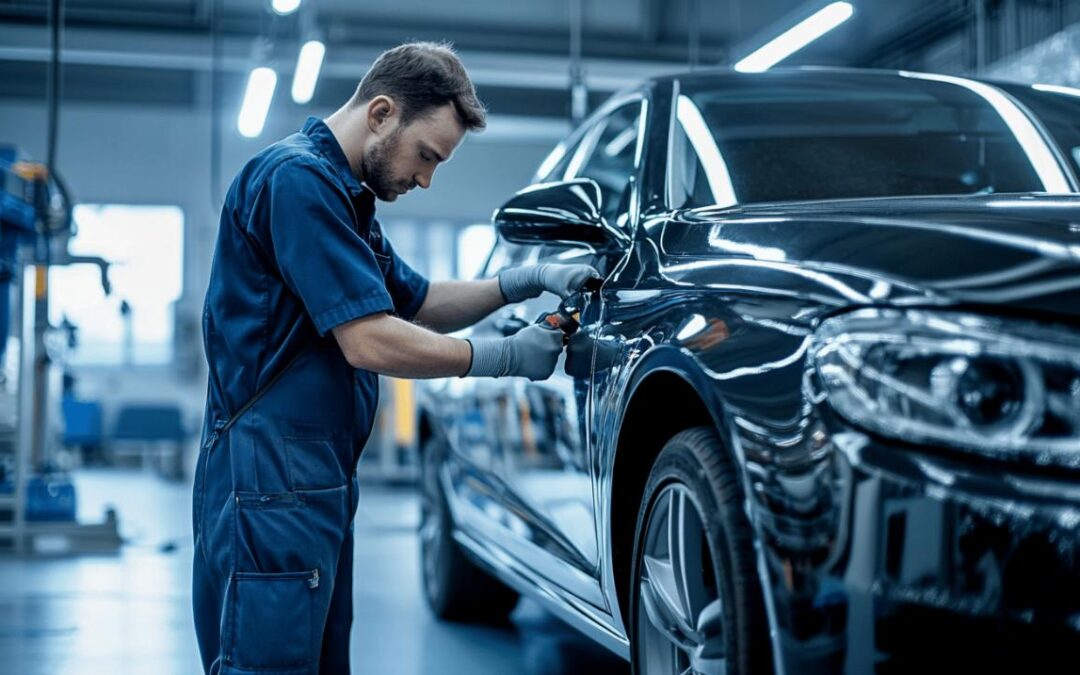Maintaining your vehicle is not just about preserving its value—it's about ensuring your safety on the road and avoiding costly repairs down the line. With proper care and regular attention, most cars can serve their owners reliably for many years. Let's explore the essential maintenance practices every car owner should know.
Understanding basic motor maintenance
According to recent surveys highlighted by Automag, only 19% of drivers always check their vehicle before a trip, while 51% sometimes perform checks and a concerning 30% never inspect their car at all. These statistics reveal a significant gap in preventative maintenance practices among motorists, potentially leading to avoidable breakdowns and safety issues.
Why regular checks extend your vehicle's life
Regular maintenance helps identify small issues before they develop into major problems. The automotive experts at Automag recommend using memory aids like the FORCES acronym (Fuel, Oil, Rubber, Coolant, Electrics, Screen wash) or the F.L.O.W.E.R. system (Fuel, Lights, Oil, Water, Electrics, Rubber) to remember essential checks. These simple frameworks ensure you cover all critical areas during routine inspections.
Creating a maintenance schedule that works
Developing a consistent maintenance routine divided into short-term, long-term, and seasonal checks makes vehicle care more manageable. Short-term checks include monitoring oil and coolant levels, inspecting tyres, and verifying all lights work properly. Long-term maintenance involves transmission fluid changes, coolant exchanges, and for petrol vehicles, spark plug replacements approximately every 30,000 miles. Seasonal maintenance addresses specific needs like winter tyre changes or battery performance checks before extreme weather arrives.
Monitoring essential fluid levels
Your vehicle relies on various fluids to function correctly, and monitoring these levels is one of the simplest yet most crucial maintenance tasks any car owner can perform.
Different types of fluids your car needs
Engine oil is perhaps the most critical fluid, serving as the lifeblood of your engine. A concerning survey found that over 20% of drivers have never changed their engine oil, while another 26% last changed it over a year ago. This neglect can severely damage engine components. Beyond oil, your vehicle needs coolant to prevent overheating, brake fluid for stopping power, power steering fluid for smooth handling, and transmission fluid to ensure proper gear operation. Each plays an essential role in your vehicle's performance and longevity.
When and How to Top Up Fluids Properly
Most fluids should be checked when the engine is cool, with the exception of transmission fluid which typically requires the engine to be running. When topping up, always use the manufacturer-recommended fluid type and grade. Engine oil should maintain a clear amber color—dark, dirty oil indicates it's time for a change. Coolant should appear bright and clear in the reservoir, while brake fluid should remain at the indicated level marks. Always consult your owner's manual for specific guidance on fluid inspection intervals and proper filling procedures for your particular model.
Tyre care and management
Tyres are your vehicle's only contact with the road, making their maintenance crucial for both safety and performance.
Proper Tyre Pressure and Its Impact on Performance
Maintaining correct tyre pressure affects multiple aspects of your driving experience. Underinflated tyres create more rolling resistance, reducing fuel efficiency and causing premature wear on the outer edges. Overinflated tyres provide less contact with the road surface, potentially reducing traction and causing excessive wear in the center of the tread. Automag notes that proper tyre inflation improves handling, extends tyre life, enhances fuel economy, and contributes significantly to overall safety. Most vehicles have the recommended pressure listed on a sticker inside the driver's door frame or in the owner's manual.
Checking tread depth and spotting wear patterns
While the legal minimum tread depth in the UK is 1.6mm, safety experts and Automag recommend maintaining at least 3mm, particularly during winter months. Uneven wear patterns often indicate alignment or suspension issues that should be addressed promptly. Look for feathering, one-sided wear, or center wear, as these can signal specific problems with your vehicle's suspension geometry or tyre pressure maintenance. Regular rotation every 5,000-8,000 miles helps ensure even tread wear across all tyres, extending their service life and maintaining consistent handling characteristics.
Following professional servicing guidelines
Even with diligent personal maintenance, professional servicing remains essential for comprehensive vehicle care.
Understanding your vehicle's service schedule
Manufacturer service schedules are designed to ensure all components receive appropriate attention at optimal intervals. These schedules typically specify maintenance based on time elapsed or distance traveled, whichever comes first. Automag emphasizes that following these guidelines is crucial not only for reliability but also for maintaining your warranty coverage. Modern vehicles often have built-in service indicators that alert drivers when maintenance is due, taking into account actual driving conditions and habits rather than just mileage.
What to expect during different service types
Service types generally fall into categories like interim, full, and major services. An interim service typically includes oil and filter changes plus basic safety checks. Full services add more comprehensive inspections and replacements of wear items like air filters. Major services might include timing belt inspections or replacements, spark plug changes, and thorough examination of major components. Understanding what each service entails helps ensure your vehicle receives appropriate care and prevents unnecessary expenditure on services you might not yet need.
Brake system maintenance
Your vehicle's braking system is arguably its most critical safety feature, making regular inspection and maintenance essential.
Warning signs of brake problems
Pay attention to warning signals your vehicle provides. Squealing or grinding noises often indicate worn brake pads or rotors. A soft or spongy brake pedal might suggest air in the brake lines or failing components. Pulling to one side during braking could indicate uneven wear or a stuck caliper. According to Automag, vibrations when braking, especially at higher speeds, typically point to warped rotors. The brake warning light on your dashboard should never be ignored, as it signals a significant issue requiring immediate attention.
Simple brake checks you can do yourself
Visual inspection of brake pads through the wheel spokes can reveal their remaining thickness. Most modern brake pads include wear indicators that produce a high-pitched squeal when replacement is needed. Checking brake fluid level and condition provides insight into the overall system health—dark or cloudy fluid indicates contamination and the need for a fluid change. While many garages offer free brake checks, being familiar with your braking system's normal feel and sound helps you identify changes that might warrant professional attention before they become serious problems.
Ensuring proper lighting and visibility
Functional lighting systems are essential for both seeing the road ahead and being visible to other road users.
Routine light checks for safety
Automag recommends checking all vehicle lights at least monthly. This includes headlights, brake lights, turn signals, reverse lights, and fog lights. A methodical approach ensures none are missed—park facing a reflective surface like a garage door to check headlights, and use objects to hold down the brake pedal while you walk around the vehicle. Alternatively, ask a friend to help verify all lights are working correctly. Remember that non-functioning lights can result in traffic violations and compromise safety, particularly in poor weather conditions.
Replacing bulbs and maintaining light fixtures
Modern vehicles often use sealed headlight units that collect condensation or develop cloudy lenses over time. Cleaning and restoring these lenses can dramatically improve night visibility. When replacing bulbs, handle new ones carefully, avoiding touching the glass with bare fingers as skin oils can create hot spots that shorten bulb life. Many vehicles now use LED lighting which rarely needs replacement but might require specialized service when issues occur. Always refer to your owner's manual for specific instructions on accessing and replacing the various light bulbs in your particular model.
Preventative maintenance and small repairs
Addressing minor issues promptly often prevents them from developing into major, expensive problems.
Identifying minor issues before they escalate
Developing awareness of your vehicle's normal sounds, smells, and feel helps identify changes early. New noises, unusual vibrations, or fluid spots under your parked car all warrant investigation. Automag suggests creating a maintenance log to track when services were performed and note any unusual observations. This record helps identify patterns and ensures regular maintenance items aren't overlooked. Many modern vehicles also offer smartphone apps that connect to onboard diagnostic systems, providing early warning of developing issues.
Diy fixes versus professional repairs
While many maintenance tasks are suitable for DIY enthusiasts, it's important to recognize your limitations. Simple tasks like changing wiper blades, replacing air filters, or topping up fluids are generally straightforward. However, safety-critical systems like brakes, steering, and major engine work often require professional expertise and specialized tools. When deciding whether to tackle a repair yourself, consider not only the complexity but also the potential consequences of incorrect work. Automag points out that some apparently simple tasks can become complicated in modern vehicles with integrated electronic systems, making professional service the more economical choice in the long run.

